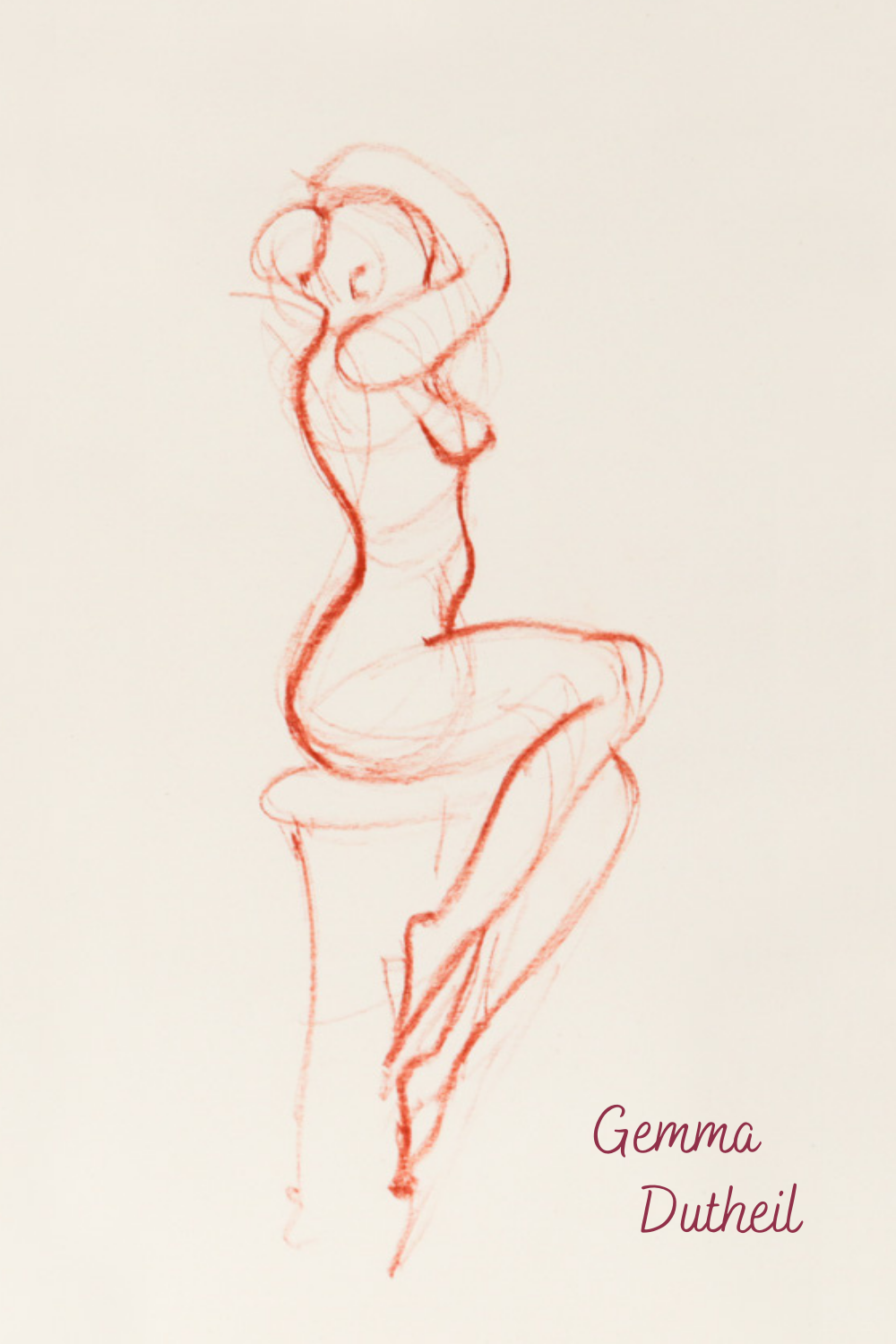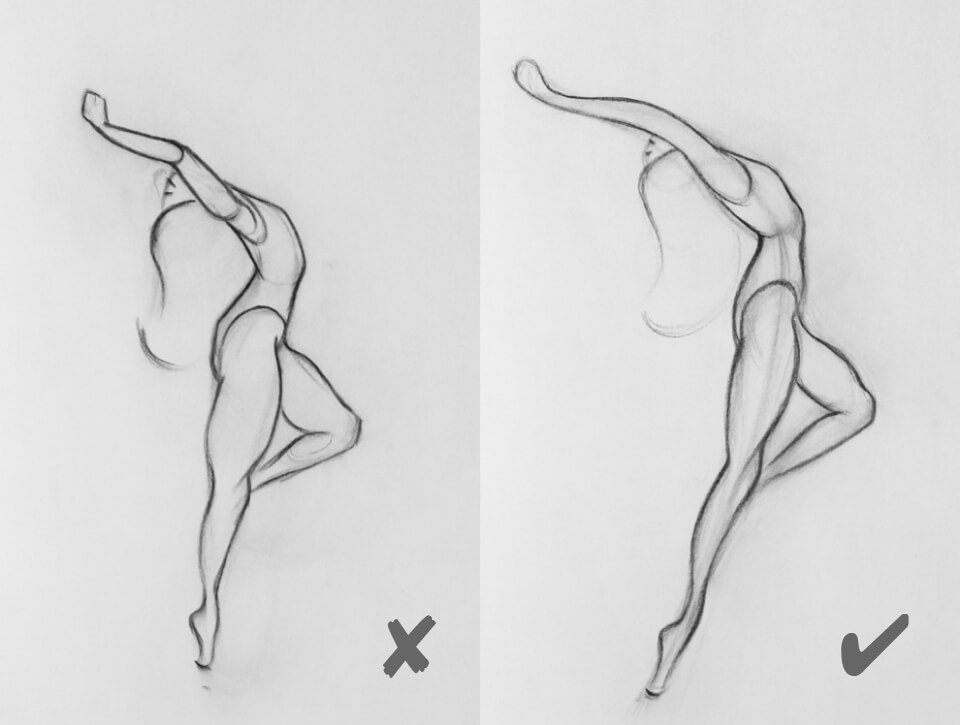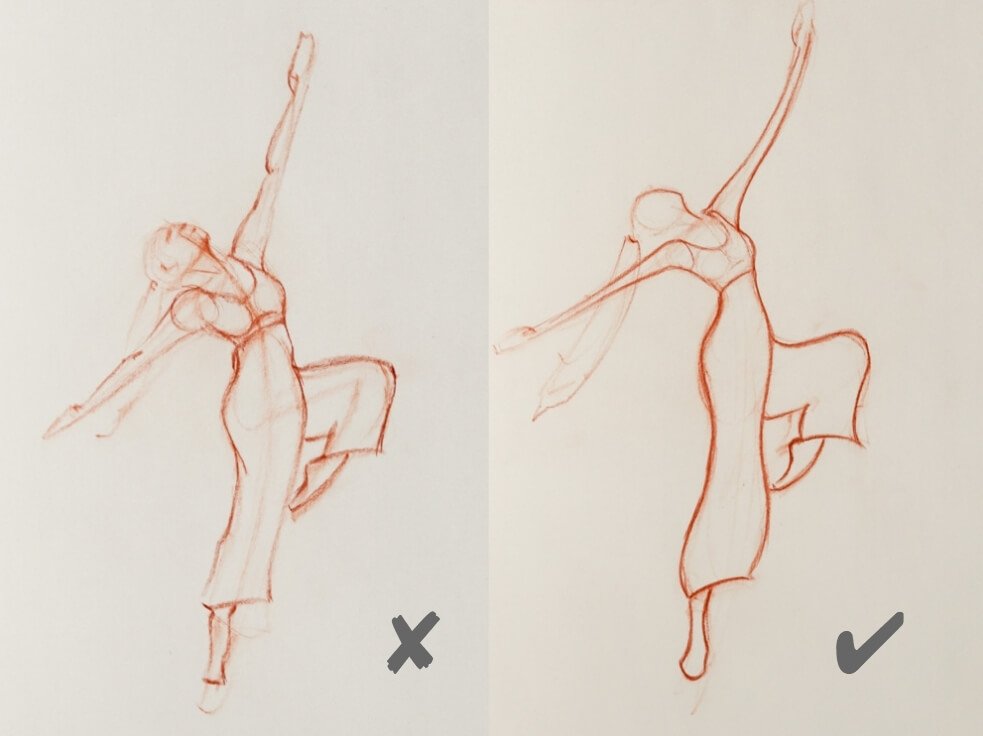4 Tips for Easy Gesture Drawing
When asking ‘what is gesture drawing?’ we are usually faced with something along the lines of ‘it’s about capturing the feeling or the essence of the pose’.
But what does this mean? How are you meant to draw feeling?!
These are questions I was left with when I started to learn about gesture drawing. The ‘essence’ of a pose is a lovely description, but I was completely lost with how to implement this in my practice.
So instead, I started to focus on the practical aspects of gesture drawing. When I did this the feeling started the appear in my drawings.
In case you are just as baffled by gesture drawing as I was, here are 4 tips that I use for easy gesture drawing.
1. Forget about anatomy
Make your drawings worm-like!
I know this sounds weird. Please bear with me.
The joints, the bones, the entire skeletal structure is clunky. The bones introduce lots of little angles and put limits on the way the body can move. You want to be free of this restriction. Focusing on anatomy is like getting stuck in mud when you want to be in the nice flowing river.
Treat the body and the limbs like a one big worm with smaller worms coming off it. Let the drawing flow like one big muscle, putting everything you know about anatomy to the back of your mind.
Do you remember this one scene in Harry Potter when Harry breaks his arm during Quidditch? The not-so-clever Professor tries to mend it but instead gets rid of the bone in his arm and it goes all floppy. That’s exactly what I’m talking about!
Draw the body as if there are no bones.
2. Take your time
Gesture poses are usually thought of as quick drawings. A light sketch you draw before putting all the details in.
But gesture drawings don’t have to be drawn fast. Instead of doing a drawing in 30 seconds, try giving yourself 10 minutes.
I know it sounds like an incredibly long time to practice gesture drawing, but you need time when learning something new. Otherwise, the tight time constraints can easily suffocate and panic you. And panic gets us nowhere.
Sit down calmly and have a real good think before putting a mark down. And then another one before you put the next mark down. You shouldn’t worry about the time because you have a whole 10 minutes to fill.
It doesn’t have to be that exact time, the point being the more time you give yourself the better you will learn. To do a gesture drawing fast, you first have to be able to do it slowly.
Dynamic poses are best for gesture drawing practice. But as models can’t hold these poses for a long time, photo references are a good alternative. Try the websites ‘Quick Pose’ and ‘Pose Space’, or look on Pinterest and Youtube for dancers, sportsmen, gymnasts etc.
3. Focus on one movement
Everything must flow into the next part, creating one whole. Even if the parts of the body don’t naturally flow into each other in reality, simply lie and make them do so on the page.
I mean it’s not really lying. It’s producing a clearer image that is more easily understood by the viewer. It is therefore more consistent with the feeling of the original image, rather than a perfect copy of it.
4. Exaggerate!
Exaggerate, exaggerate, exaggerate!
I’m always being caught out for exaggerating my stories. The spider I found in my bedroom was never actually the size of my entire hand, but it makes the telling of events far more interesting to say that it is.
Exactly the same applies to gesture drawing. You are describing the pose to someone else, the same way you would tell a story. It might go against your instincts when you are trying to perfectly capture a pose, but you will describe that pose better if you exaggerate it.
Summary
Capturing ‘the essence’ of a pose for a gesture drawing can initially sound rather unclear and perplexing. However, all your doing is exaggerating the pose, pretending the body has one rhythm and making it look a bit like a worm.
Take your time and slowly you will be able to do these drawings faster and with ease.
These are not strict rules to follow but rather ideas to help make gesture drawing a little easier.
Let me know in the comments if you have any other tips for gesture drawing and if these have been of help to you.



